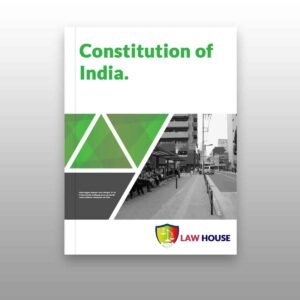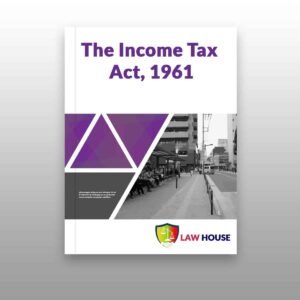Once again it is that time of the year where masses go mad over taxes. You must comply with these deadlines. Compliance with deadlines is essential to avoid any an unnecessary cough up of additional taxes. Before we go into details lets first understand what is Income Tax Return.
What is Income Tax Return (ITR)?
Income tax return is a proof that you have an income for which you have paid tax. According to the Income Tax Act, 1961, the term ‘return of income’ means proof of income earned by an individual or a business entity. Filing of income tax returns (ITR) is a voluntary but mandatory obligation where you report your income, capitals gain, and other allowances and reliefs claimed for a particular year. It is mandatory for every person to file his ITR as per the taxation rates imposed by the government if his income exceeds the exempted tax bracket.
Who is required to file Income Tax Return (ITR)?
Individuals
All those individuals whose annual income exceeds the basic exemption tab have to file ITR, you have to file your returns if you fall under any of the following categories.
- Individuals (men and women both) with taxable income exceeding Rs 250,000 p.a.
- Senior Citizens with taxable income exceeding Rs 300,000 p.a.
- Senior citizens aged more than 80 years with taxable income exceeding Rs. 500,000 p.a.
Businesses
Companies, Partnerships, and Proprietorship: Income tax is calculated at a rate of 25% if the gross turnover is upto 50 crore in the previous year and 30% for companies with turnover exceeding 50,000 crore.
When your employer is deducting the tax-
If your employer is taking care of your taxes by deducting it from your salary then you need not worry. You only have to take care of any additional income that you may be receiving from other sources. If this additional income after reducing TDS is 10,000 or more, you would be liable to pay your advance tax in 4 installments. The last installment would have been due on 15th March. If you have missed on paying taxes then you must do so before 31st March to avoid paying interest.
Know about tax instruments-
To lower your tax outgo you should make tax investments in tax saving instruments under Section 80C, 80D etc. These include contribution towards ELSS, PPF account, National Pension Scheme, medical premium, premium towards life insurance cover. You will get a deduction of Rs.1.5 lakh for investments in Public Provident Fund, life insurance premium, national savings certificate, 5-year bank or post office deposits, equity-linked savings scheme, principal repayment for housing loan etc. You are eligible for a deduction under Section 80D if you are paying medical insurance premium for yourself, spouse or children upto 25,000. Tax exemption is allowed for up to Rs 50,000 in a year under Section 80CCD, which is over and above the benefit available on Rs 1.5 lakh under Section 80C.Investment can also be made under 80C and 80D at the time of filing tax returns or before 31st March.
File your belated returns-
In case if you have missed filing returns for financial year 2015-16 or 2016-17 on or before 31st March 2018. You can also revise your returns, if it requires any corrections. This will be called a belated return. You can get a notice for “Income escaping assessment” if you fail to comply with the deadlines.
Why to file your Income Tax Return (ITR)?
- Banks and High commissions of various countries, certain credit card companies insist on proof of tax return before extending you credit and issuing a card. The same goes for financial institutions, which may rely on ITRs of past few years before undertaking business transactions with you.
- A good record of ITR can reflect strongly on your image as an individual and as a business when it comes to winning contracts and procuring high-profile projects. Sometimes, tender applications for large-scale infrastructure and other government projects are scrutinized based on the ITRs of past 5–7 years along with other factors.
- In case of accidental death of an insured individual due to road accident, insurance claims are empowered by providing a clean record of ITR. Any missing returns can weaken the claim in case the insurance policy hits a disputed path. The Life insurance companies also ask for ITR documents against high-value policies.
- ITRs are taken as a trusted yardstick by angel and seed investors and venture capitalists. Gaining visibility on your cash flows can become easy with a healthy tax record.
- Short- or long-term capital losses, or losses of any other type incurred by an individual or a business can be recovered if they are accounted for in the tax return filed in that financial year.
How to file your Income tax return online?
- Register yourself on the Income Tax Department’s website using your personal details. Your permanent account number (PAN) will be your user ID.
- There are two ways of e-filing your income tax return. First, you can go to the download section and select the requisite form, save it on your desktop and fill all the details. Click on ‘generate XML’. Then go to the website again and click on the ‘upload XML’ button. You will have to first log into to upload the XML file saved on your desktop and click on submit.
- You can go to the quick e-file section of the website. Log in and select the form and the assessment year for which you are filing return and fill in all the details.
- Select the forms on the basis of the source of your income. In case of an individual with salary, pension income, income from one house property or income from other sources excluding lottery, you have to select Form ITR-1, also known as ‘SAHAJ’. If you have capital gains, you will have to file Form ITR-2.
- Keep a few documents such as your PAN number, Form 16, your interest statement, tax deducted at source (TDS) details and investments proves handy while e-filing your income tax return.
- An additional column called “AL” has been added, in which you will have to disclose the value of your assets and liabilities at the end of the year, in case your income for the year is more than Rs 50 lakh.
- You can also download your Form 26AS, which is your consolidated tax statement summarizing tax paid against your PAN. You can validate your tax return with Form 26AS to check you tax liability.
- Once you are submitting the form, an acknowledgement number is generated in case the return is submitted using digital signature. If the return is submitted without a digital signature, an ITR-V is generated and is sent to your registered email ID. ITR-V is an acknowledgement that your return has been submitted.
- You can also e-verify your return through electronic verification by using the e-verify return option on the website. You can also use the net banking, Aadhaar-based one-time password to e-verify it.
Related Post:
Related Book:









![Honey trap in Cybercrime: A to Z guide Exploring Honey Trap in Cyberspace [With Video]](https://www.lawhousekolkata.com/wp-content/uploads/Post-Images/Honey-Trap-300x169.jpg)



















































